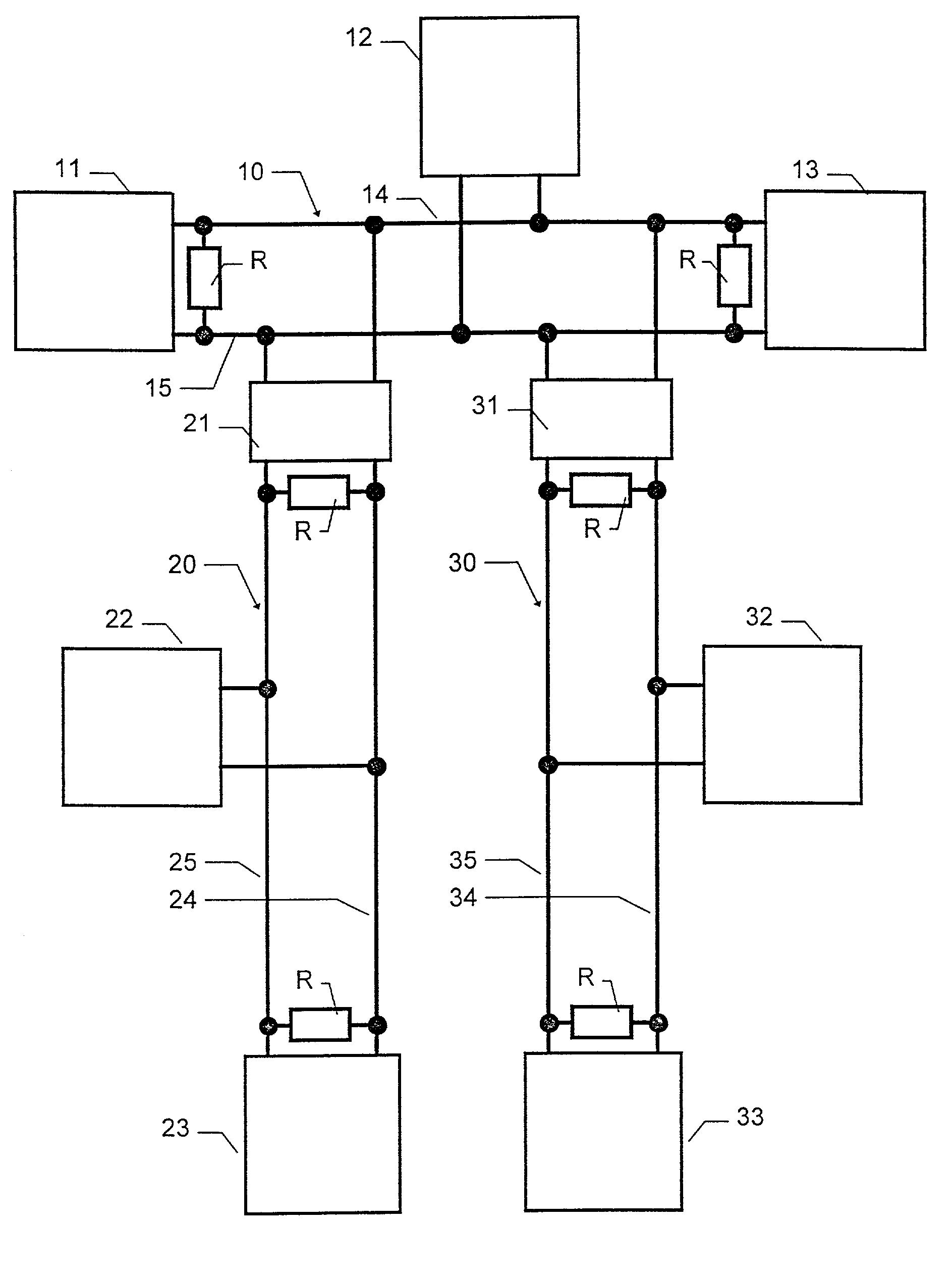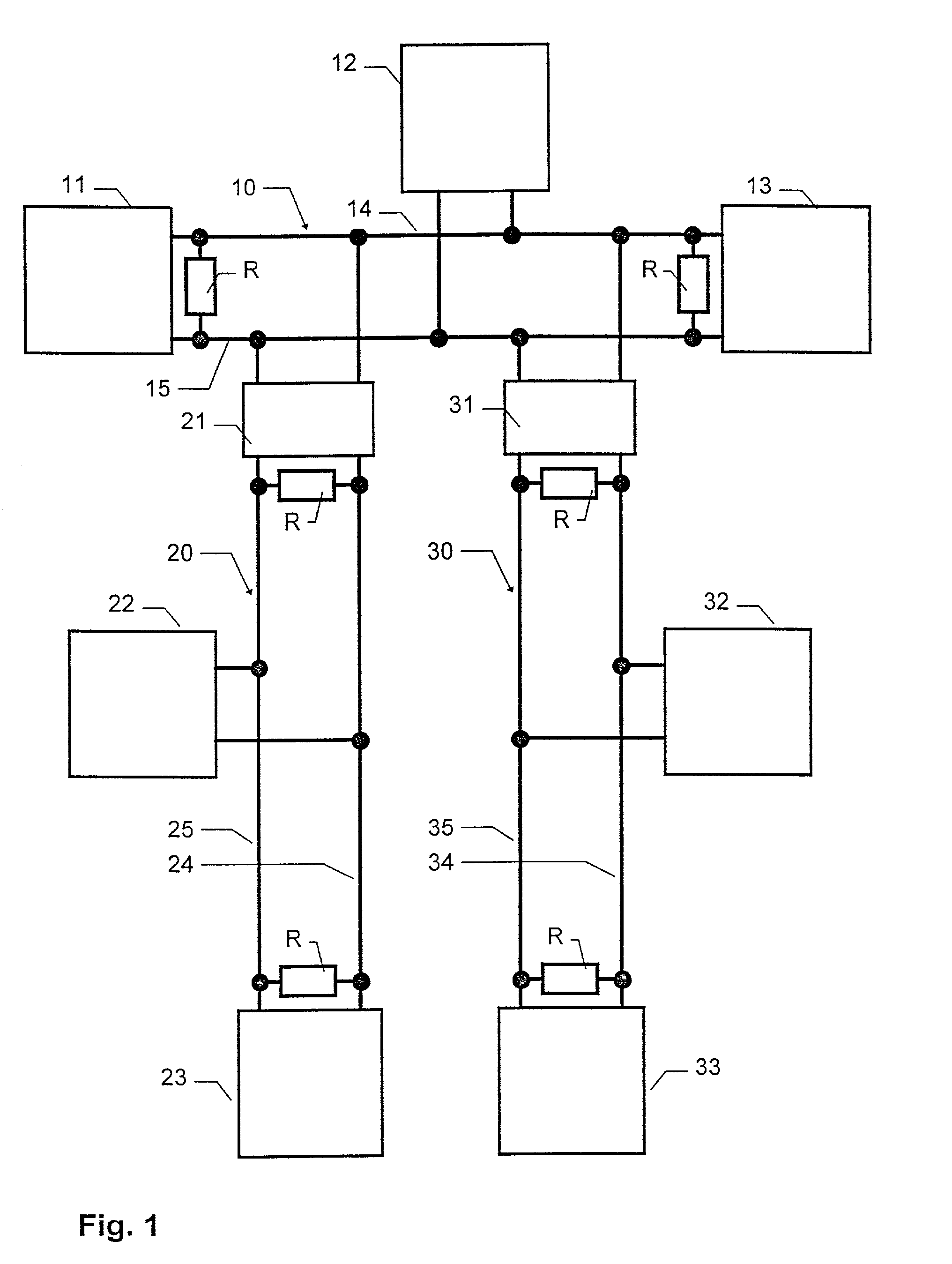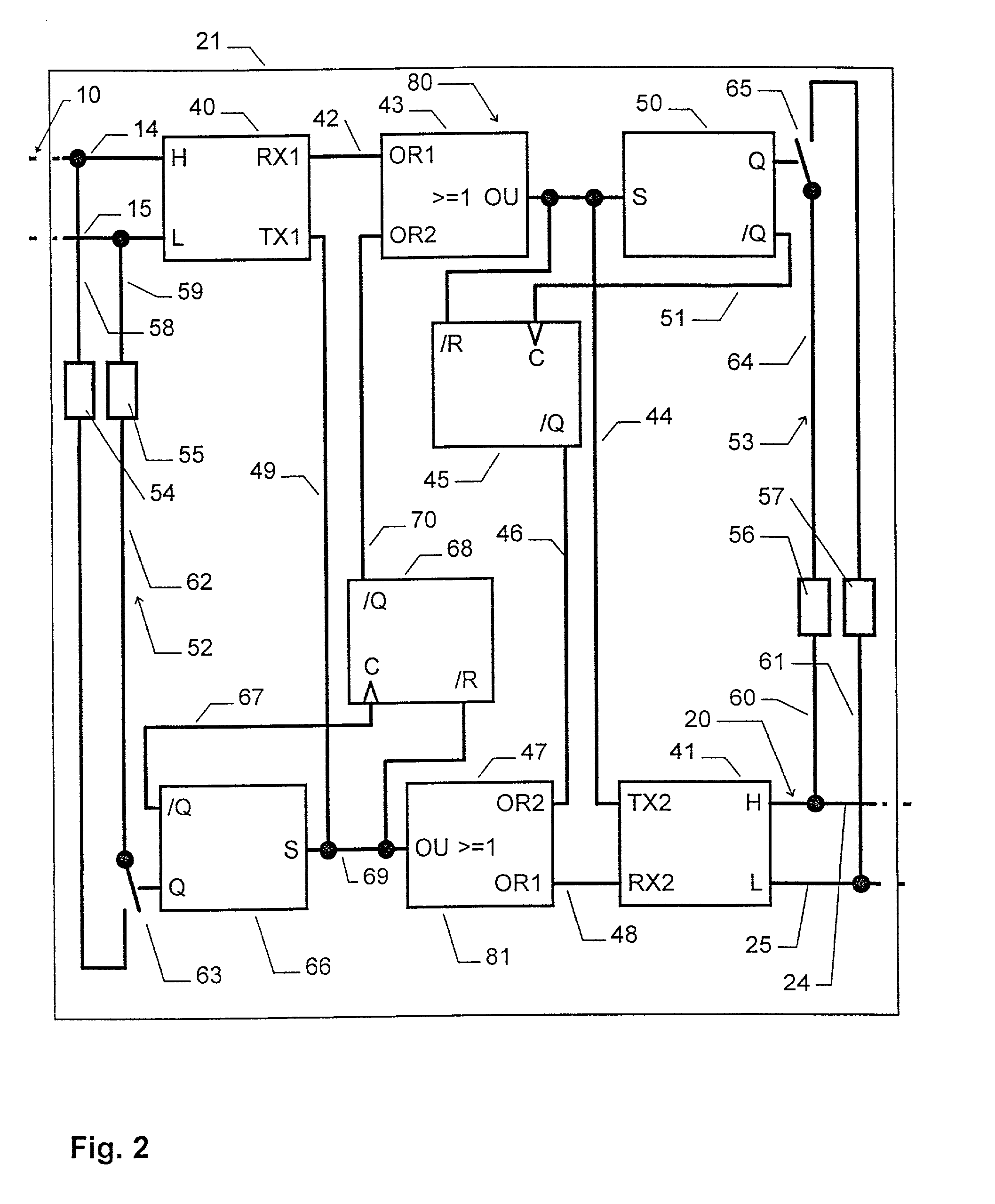Bus repeater
a bus and repeater technology, applied in the field of bus repeaters, can solve the problems of high cost of bus repeaters, unsatisfactory delays in signal transmission between respective linked buses,
- Summary
- Abstract
- Description
- Claims
- Application Information
AI Technical Summary
Benefits of technology
Problems solved by technology
Method used
Image
Examples
Embodiment Construction
.
[0022] FIG. 1 depicts a bus 10, which in the present case is a CAN bus, with connected bus traffic participants 11, 12 and 13. In the case of such bus participants 11, 12 and 13 it is a question for example of control device for fluid power valve arrangements, which communicate with one another by way of the bus 10. Moreover, CAN buses 20 and 30 are connected to the bus 10 by way of bus-repeaters 21 and, respectively, 31, which in the present case are of identical design. The bus 20 serves as a communication medium for the bus participants 22 and 23, whereas the bus 30 serves the bus participants 32 and 33. The bus participants 22 and 23 and furthermore 32 and 33 are for example local control means, which are associated with the bus participants 11 and respectively, 13. The buses 10, 20 and 30 possess bus lines 14, 15, 24 and 25 and, respectively, 34 and 35, which are each terminated by terminal resistors R at the bus end. The bus line 14 serves as a CANH lines ("CAN high") and the...
PUM
 Login to View More
Login to View More Abstract
Description
Claims
Application Information
 Login to View More
Login to View More - R&D
- Intellectual Property
- Life Sciences
- Materials
- Tech Scout
- Unparalleled Data Quality
- Higher Quality Content
- 60% Fewer Hallucinations
Browse by: Latest US Patents, China's latest patents, Technical Efficacy Thesaurus, Application Domain, Technology Topic, Popular Technical Reports.
© 2025 PatSnap. All rights reserved.Legal|Privacy policy|Modern Slavery Act Transparency Statement|Sitemap|About US| Contact US: help@patsnap.com



